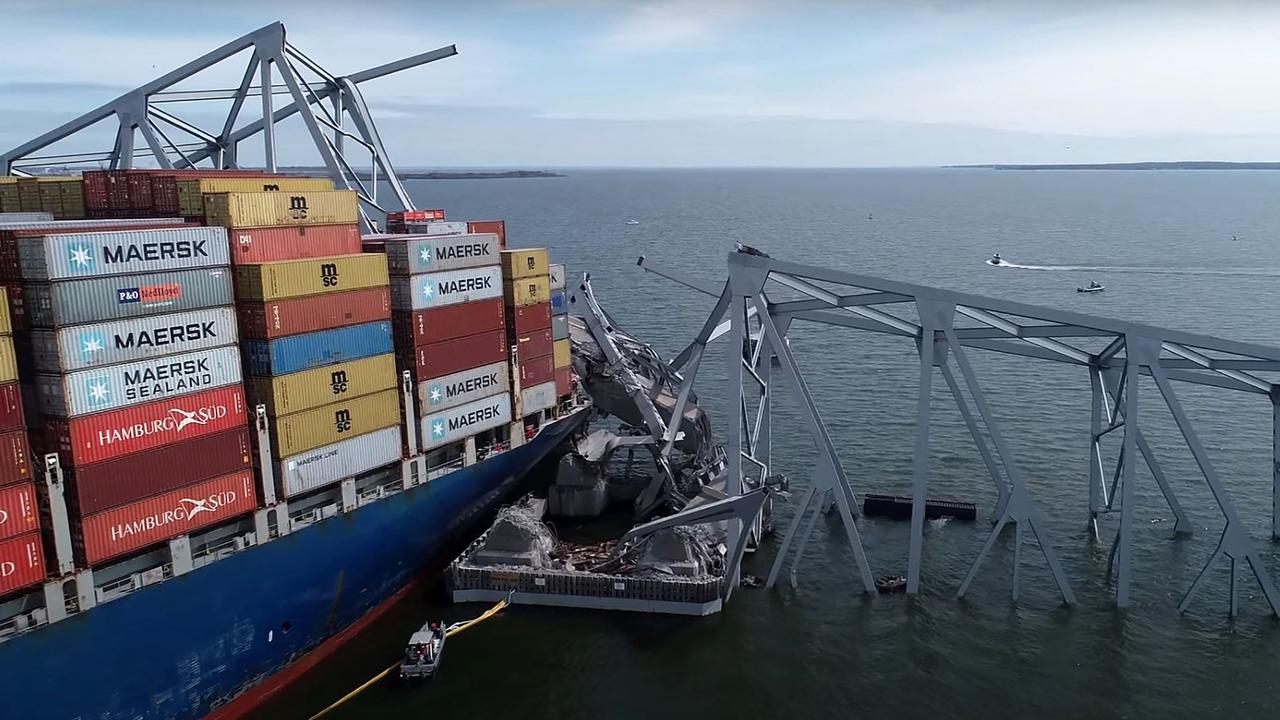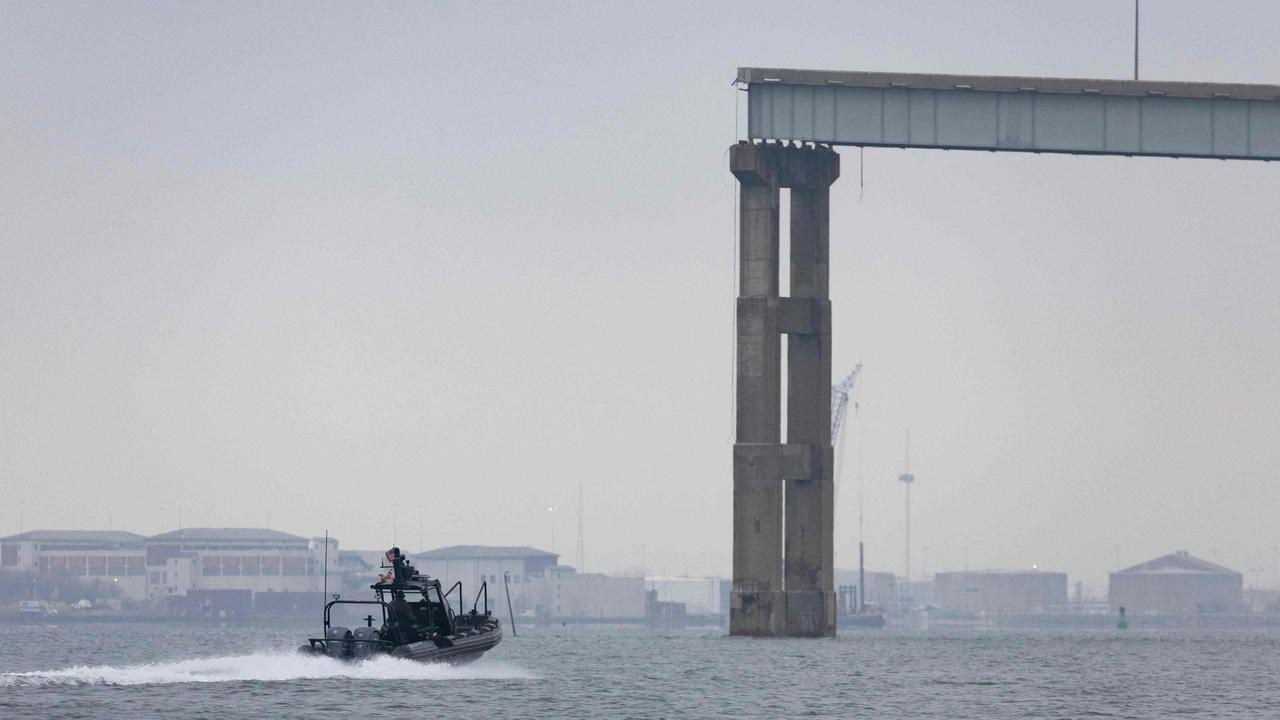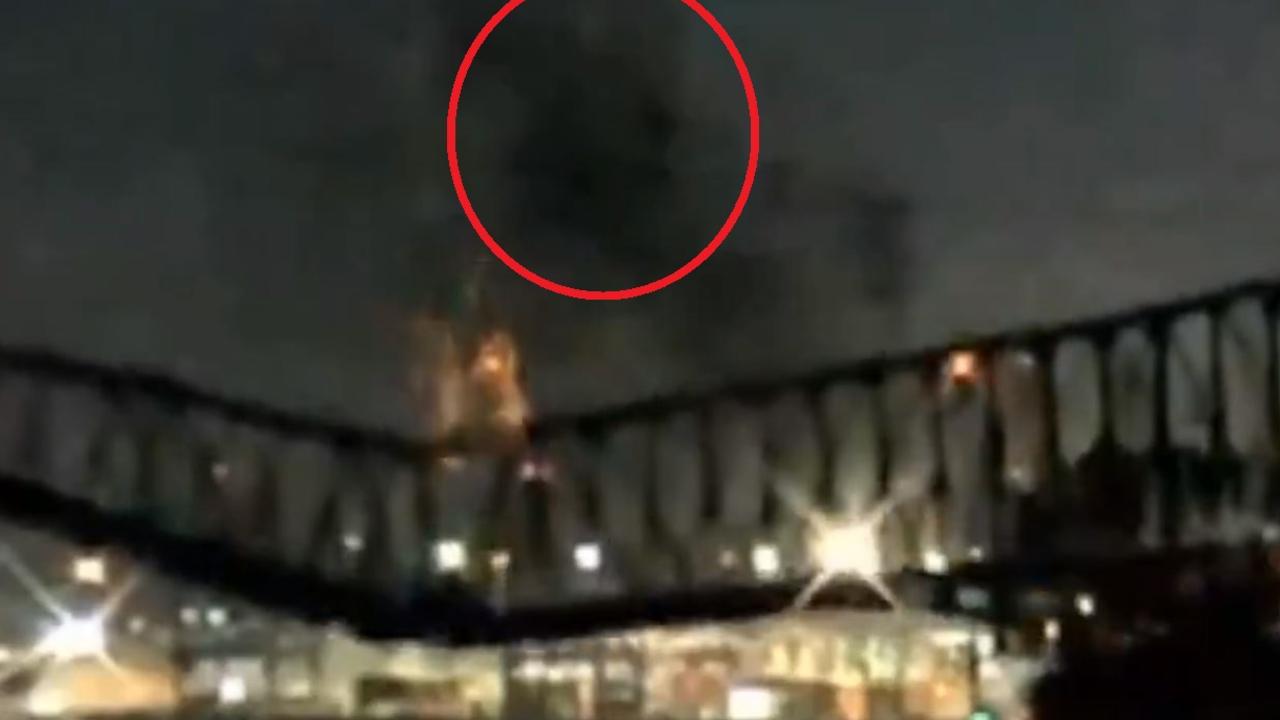Grim discovery in ute after bridge collapse
Specialist divers combing the ice-cold waters of the Baltimore harbour have made a grim discovery inside a red pick-up truck after the bridge disaster.
Specialist divers have recovered the bodies of two construction workers trapped underwater in a red pick-up truck after the Baltimore bridge disaster.
Authorities believe four more missing workers who were on the bridge when a giant cargo ship slammed into it on Tuesday morning local time are also dead.
“The teams made a tragic finding shortly before 10.00am with a red pick-up truck near the bridge,” Ronald L Butler from Maryland State Police said.
“Divers recovered two victims trapped within the vehicle.”
The victims have been named as Baltimore resident Alejandro Hernandez Fuentez, 35, and 26-year-old Darlene Rania El Castillo Cabrera from Dundalk, east of the city.
Both men’s families have been informed. The assumed victims are citizens of El Salvador, Guatemala, Honduras and Mexico.
“We have exhausted all efforts around the wreckage,” Mr Butler said. “We firmly believe all the vehicles are encased in concrete around the wreckage.”
Authorities continue to search for the bodies of the remaining men who were working the night shift fixing potholes when disaster struck.
The container ship Dali, about 300 metres long and piled high with cargo, was leaving the busy port at 1.30am on Tuesday (4.30pm AEDT) when power failed and the vessel crashed straight into a support column.
Nearly the entire steel structure — crossed by tens of thousands of motorists each day — collapsed instantly, cascading over the bow of the ship, blocking one of the busiest US trading ports.
The vessel, which remained entangled in the debris on Wednesday, was “stable,” Coast Guard Vice Admiral Peter Gautier told reporters at the White House, adding that the mostly Indian crew remained on board and were “very much engaged” in the investigation.
Troubling theory about bridge collapse
Meanwhile, there is speculation that so-called “dirty fuel” may have played a key role in the freak accident.
The containerwas seen spewing black smoke in the seconds prior to it hitting the Francis Scott Key Bridge in the US city.
It’s also been reported that the disaster unfolded so quickly, the ship was unable to put down an anchor that might have prevented it from slamming into one of the motorway bridge’s pillars.
A miraculous effort to close the bridge may have saved many motorists from falling into the frigid waters of the Patapsco River below.
None of the Dali’s crew were injured despite the bridge’s mangled wreckage wrapping itself around the stricken ship.

Ship ‘black boxes’ recovered
On Wednesday, divers retrieved a data recorder from the vessel, the equivalent of an aeroplane’s black box.
Investigators are now piecing together what led to the shocking collision.
The MV Dali, operated by Singapore based Synergy Marine Group on behalf of Danish shipping giant Maersk, left the port of Baltimore, north of Washington DC, at around 12.45am local time on Tuesday (3.45pm AEDT).
The 95,000 tonne vessel was bound for Sri Lanka and was carrying 1.5 million gallons of fuel and 4700 containers of which two are now missing.
It was moving at 14.8km/h in the harbour's waters which was a speed fast enough to keep a ship of that size from being moved off course by currents.

At the helm was a local pilot rather than the Dali’s captain which is standard procedure in ports.
At around 1.25am CCTV captured the Dali’s lights going out. A minute later the lights flickered back on, the imagery showed, but that was accompanied by thick smoke coming from its funnel.
A little more than a minute later the lights went out again and the Dali appeared to slow and drift.
A mayday call was sent out by the Dali’s crew. Seconds after that, at 1.29am, it struck one of the Francis Scott Key Bridge’s supports sending the structure, which carried the I-695 Baltimore ring road, crashing into the water.

‘Dirty fuel’ theory
After the collision, the US Government’s Cybersecurity and Infrastructure Security Agency issued a preliminary report stating the Dali had “lost propulsion” as it was leaving port.
A key focus of the investigation will be why that happened.
US newspaper the Wall Street Journal said the probe will look at whether contaminated fuel was a factor.
The paper cited a Coast Guard briefing it had seen.
“The vessel went dead, no steering power and no electronics,” an officer on board was stated as saying in the report, according to the Wall Street Journal.
After the engine stopped it’s been reported there was no time to drop anchors to prevent the Dali from drifting. Even if they had succeeded it may not have been enough to bring the ship to a complete halt in time.
With the ship slowing due to the lack of the power it may have been more at the mercy of the currents which potentially sent it toward the crossing’s pillar.
“One of the engines coughed and then stopped. The smell of burned fuel was everywhere in the engine room and it was pitch black.”
The black smoke could be a sign of the sullied fuel.
Safety officials have now confirmed that “dirty fuel” will be examined in the investigation.
Naval experts told the BBC contaminated fuel can cause ships to blackout and lose steering at sea.
While smaller generators are a backup they may not be able to fully power all the ship’s systems.
And besides, they take time to kick in. That might be fine in the wide open ocean but not in a congested harbour like Baltimore where obstacles abound.

‘The FBI should look into that’
An oil refinery owner told US TV network Fox News on Wednesday that there could be some veracity to concerns about dirty fuel.
Using it, rather than proper fuel, saved refiners money. United Refining Company CEO John Catsimatidis said it had been surreptitiously sold in the past to schools and transport providers.
“If nobody’s watching closely enough, they’ll give them contaminated fuel,” he said.
“You know, you give them 80 per cent real fuel and 20 per cent garbage. And the FBI should be looking into that”.

Ship inspections
Singapore authorities have said the Dali passed two inspections last year.
“The vessel’s required classification society and statutory certificates covering the structural integrity of the vessel and functionality of the vessel’s equipment, were valid at the time of the incident,” the Singapore Port Authority stated.
It added that a faulty monitor gauge for fuel pressure was rectified in June.
Nonetheless, the Dali has been issued with two “deficiencies,” in the past according to records from the Electronic Quality Shipping Information System (Equasis).
Last year, Chilean authorities gave the ship a “deficiency” for “propulsion and auxiliary machinery — gauges, thermometers, etc”.
Another deficiency occurred at the Belgian port of Antwerp in 2016 when its stern swung around several times repeatedly hitting the port’s quay damaging the ship’s hull.
It passed its last inspection, in September 2023, in New York City.
The incident has forced the closure of the port of Baltimore, the US’ eighth largest.
While some cargo can be diverted to other ports, there are concerns the closure could cost as much as $23 million a day.
– with AFP.
Originally published as Grim discovery in ute after bridge collapse





